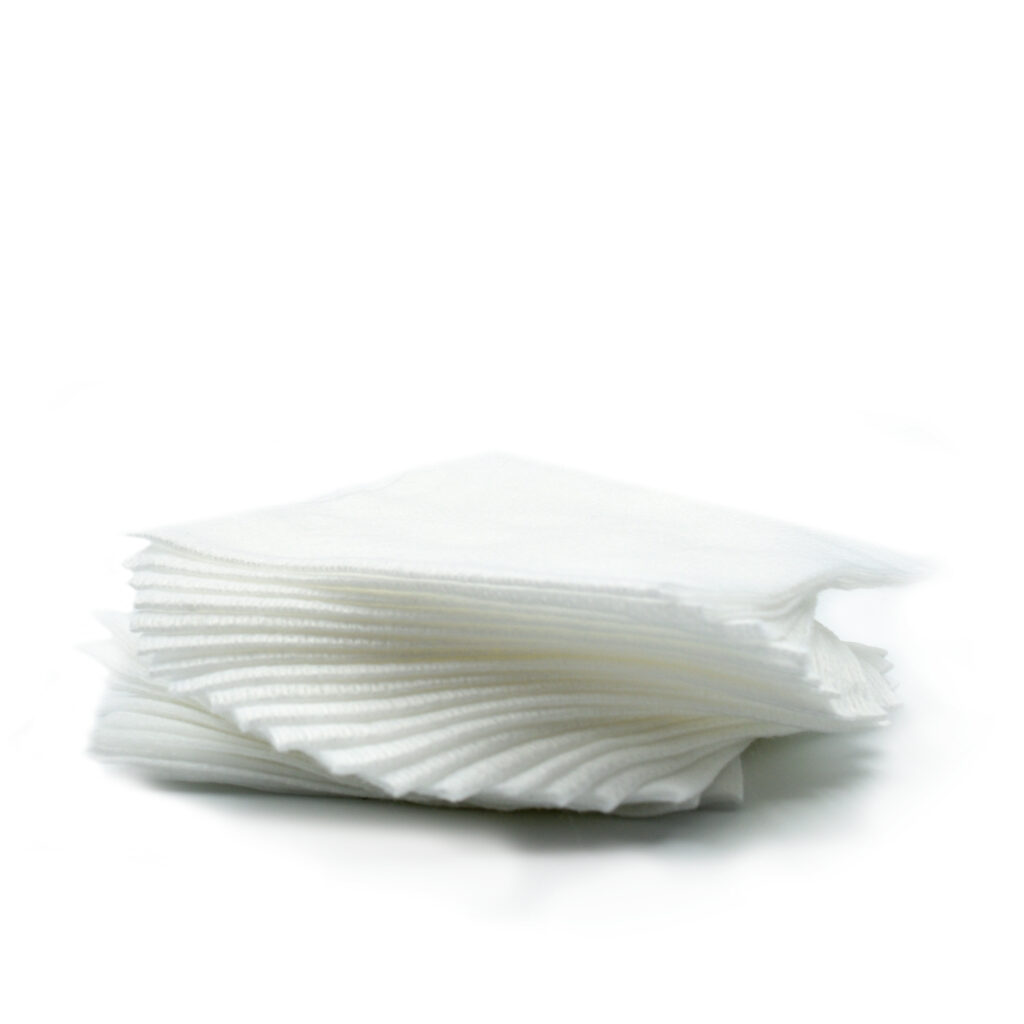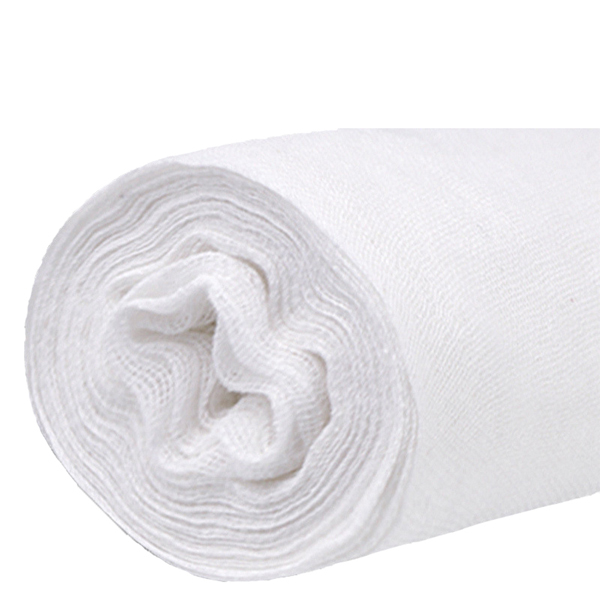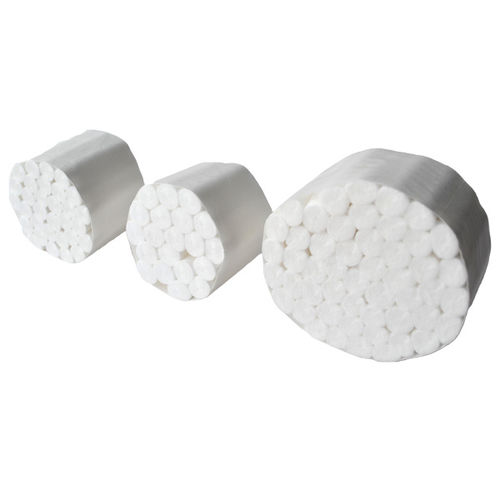د طبي اکمالاتو په نړۍ کې، یو څو توکي بنسټیز دي او په نړیواله کچه پیژندل شوي جراثیمي ګاز پیډ. په متحده ایالاتو کې د مارک تامپسن په څیر د تدارکاتو مدیر لپاره ، د روغتون ذخیره کولو دنده په غاړه لري ، یا د کلینیک مدیر لپاره چې ډاډ ترلاسه کړي د لومړنۍ مرستې کټ د هر څه لپاره چمتو دی، عاجز ګوز پیډ یو مطلق بنسټ دی. مګر ټول پیډونه مساوي ندي رامینځته شوي. د 8-ply او a ترمنځ توپیر ۱۲-پلی پیډ, اوبدل vs. غیر اوبدل پنبه, یا د اغیزې د USP ډول VII معیارونه کولی شي مستقیم د ناروغ پاملرنې او بودیجه اغیزه وکړي. زما نوم الن دی، او زما له نظره په چین کې د تولید کونکي په توګه اوه تولیدي لینونه چلوي چې دې مصرفي توکو ته وقف شوي، ما په لومړي سر کې لیدلي چې د لوړ کیفیت څخه جلا کوي زخم پوښل له یو فرعي څخه. دا مقاله ستاسو حتمي لارښود دی. موږ به هر هغه څه مات کړو چې تاسو ورته اړتیا لرئ په اړه پوه شئ جراثیمي ګوز پیډونه، د دوی د جوړولو څخه د دوی غوښتنلیک پورې ، تاسو سره د هرچا لپاره د باخبره ، باوري پیرود پریکړې کولو کې مرسته کوي د زخم ساتنه اړتیا
په حقیقت کې د جراثیمي ګاز پیډ څه شی دی؟
په خورا بنسټیز ډول، a ګوز پیډ د جاذبې موادو یوه مربع یا مستطیل ټوټه ده، معمولا له 100 څخه جوړ شوی سلنه پنبهلپاره کارول کیږي د زخم ساتنه. دا کیدای شي په مختلفو بڼو کې راشي، مګر تر ټولو عام دی ګز سپنج, یوه ټوټه ټوټه پنبه جاج د زخمونو پاکولو، پوښلو او ساتنې لپاره کارول کیږي. اصطلاح "پیډ"اکثرا دې څو پوړونو سپنجونو ته اشاره کوي. تاسو به یې وګورئ چې دوی هرچیرې کارول کیږي، د ښوونځي د ساده نرس دفتر څخه تر پیچلي جراحي تیاتر پورې. د دوی لومړنۍ دندې د مایعاتو جذب کول لکه وینه یا exudate، د ککړتیا په وړاندې محافظتي خنډ چمتو کول، او د ټپي شوي ساحې لپاره نرم کشن وړاندې کول دي.
د دې جوړونه د زخم لپاره پیډ پاملرنه په فریب سره ساده مګر مهمه ده. یو کیفیت ګوز پیډ باید نرم وي د تنفس وړ، او ډیر جذبونکی. موږ ډیری وختونه خپل پیډونه د ځانګړي معیارونو پوره کولو لپاره تولید کوو ، لکه د USP ډول VII ګاز، کوم چې د کیفیت ، پاکوالي او د یوې ټاکلې کچې تضمین کوي جذب. دا معیار پیرودونکو ته ډاډ ورکوي چې پیډ په ډاډمنه توګه ترسره شي. د ټول ګاز د دې پیډونو ډیزاین دوی د پراخه غوښتنلیکونو لپاره څو اړخیزه کوي، دوی د یو لازمي په توګه رامینځته کوي د لومړنۍ مرستې لپاره د پاملرنې محصول.
ولې "جراثیم" د زخم د مینځلو لپاره د نه منلو وړ ځانګړتیا ده؟
کلمه "جراثیم"یوازینۍ خورا مهمه ځانګړتیا ده کله چې a ګوز پیډ د خلاص زخم لپاره ټاکل شوی. جراثیم معنی پیډ د ژوندیو باکتریاو، تخمونو او نورو مایکرو ارګانیزمونو څخه په بشپړه توګه پاک دی. دا د سخت تعقیم پروسې له لارې ترلاسه کیږي، او د جراثیمي پیډونه بیا دي په انفرادي ډول پوښل شوی تر څو چې دوی خلاص نه وي دا حالت وساتي. کله چې تاسو ځای په ځای کړئ جامې اغوستل په مات شوي پوټکي کې ، تاسو بدن ته مستقیم لاره رامینځته کوئ. په کارولو سره a غیر جراثیم پیډ دا به داسې وي لکه په قصدي ډول زخم ته د میکروبونو معرفي کول، د انفیکشن لوړ خطر رامینځته کوي، کوم چې کولی شي د جدي اختلاطاتو او د شفاهي ځنډ لامل شي.
د دې دلیل لپاره، کوم مناسب د لومړنۍ مرستې کټ یا طبي اسانتیاوې باید ذخیره شي جراثیمي ګوز پیډونه. په داسې حال کې ټول مقصد غیر جراثیم ګوز خپل ځای لري - د ثابت پوستکي پاکولو لپاره، د پیډینګ سپلینټونو، یا د ثانوي په توګه جامې اغوستل- دا باید هیڅکله خلاص زخم لمس کړئ. د بسته بندۍ بشپړتیا خورا مهم دی؛ که چیرې په یوه لفافه باندې لفافه وي جراثیم پیډ مات شوی یا جوړ شوی، دا باید په پام کې ونیول شي غیر جراثیم او رد شوي یا غیر مهم استعمال ته لیږدول شوي. ډاډمن کول بانجان د خوندي او اغیزمن بنسټیز اصول دی د زخم ساتنه.

د لینګو ډیکوډ کول: د ګوز پیډ لپاره "12-Ply" څه معنی لري؟
کله چې تاسو یو بکس وګورئ د ګز پیډ، تاسو به ډیری وختونه داسې شرایط وګورئ ۸-پلی, ۱۲-پلی، یا حتی ۴-پلی. دا پخپله د موادو ضخامت ته اشاره نه کوي ، بلکه په پوښ کې د پرتونو شمیر ته اشاره کوي پیډ. یو واحد لوی شیټ ګاز د فاینل جوړولو لپاره څو ځله پوښل کیږي ګز سپنج. الف ۱۲-پلی پیډد مثال په توګه، د شیټ څخه جوړ شوی ګاز چې د موادو د 12 پرتونو جوړولو لپاره پوښل شوی. دا پلای ساختمان د کلیدي شاخص دی پیډد ضخامت، تکیه، او جذب.
د لوړ پلای شمیره پدې معنی ده چې یو موټی، ډیر جذب پیډ. الف ۱۲-پلی ګوز پیډ د اعتدال څخه تر سختو اوبو رسولو سره د زخمونو لپاره خورا ښه دی، ځکه چې دا کولی شي ډیر مایع جذب کړي او ښه محافظت چمتو کړي. یو ۸-پلی پیډ د منځنۍ ځمکې یو ښه انتخاب دی، د ډیری عام ټپونو لپاره مناسب دی. الف ۴-پلی پیډ پتلی دی او کم جذبدا د کوچنیو ټوټو، سکریپونو، یا د پاکولو لپاره غوره کوي پیډ. د پلای پوهیدل تاسو سره مرسته کوي چې سم سره سمون ومومي جامې اغوستل د زخم اړتیاو ته په پام سره، د پرله پسې بدلونونو مخنیوی او ډاډ ترلاسه کول چې زخم پاک او خوندي پاتې کیږي.
زه څنګه سمه اندازه غوره کړم؟ د 2 × 2، 3 × 3، او 4 × 4 ګوز پیډونو ته یوه کتنه
د پلی سره یوځای، اندازه یو مهم فاکتور دی. د ګوز پیډونه راځي په معیاري ابعادو کې، تر ټولو عام 2"x2"، 3"x3"، او 4"x 4". هغه اندازه چې تاسو ورته اړتیا لرئ د هغه زخم اندازې لخوا ټاکل کیږي چې تاسو یې درملنه کوئ. موخه د دې لپاره ده پیډ زخم په بشپړه توګه د څنډو په شاوخوا کې لږ تر لږه د یو انچ لږ سرحد سره پوښ کړئ ترڅو یو مناسب مهر ډاډمن کړي او د ککړتیاو د ننوتلو مخه ونیسي.
- 2"x2" د ګوز پیډ: دا کوچني پیډونه د وړو ټوټو، ټوټو، د انجیکشن سایټونو، یا د کارولو لپاره مناسب دي غاښونه کړنلارې د دوی کمپیکٹ اندازه دوی د پورټ ایبل لپاره مثالی کوي د لومړنۍ مرستې کټ.
- 3"x3" د ګازو پیډونه: یو څو اړخیز، د منځنۍ اندازې اختیار د پراخو ټپونو لپاره مناسب دی چې د یو لپاره خورا لوی وي. 2 x 2 پیډ مګر د لوی پوښښ ته اړتیا نلري جامې اغوستل.
- 4 "x 4" د ګوز پیډونه: دا د معتدل څخه تر لویو ټپونو، جراحي چیرو، او هغه حالتونو لپاره معیاري اندازه ده چې د پام وړ اړتیا ته اړتیا لري. د جذب وړ جامې. د 4 x 4 پیډ په روغتونونو او بیړنیو خونو کې یو مهم دی.
د سمې اندازې غوره کول یوازې د پوښښ په اړه ندي؛ دا د لګښت اغیزمنتوب په اړه هم دی. د لوی کارول 4 x 4 پیډ په یوه کوچنۍ کټ کې ضایع کیږي. برعکس، هڅه کوي چې یو لوی سکریپ د a سره پوښ کړي 2 x 2 پیډ غیر موثر او ناامنه ده. په لاس کې د مختلف اندازو درلودل ډاډ ورکوي چې تاسو تل د دندې لپاره سم وسیله لرئ.

اوبدل بمقابله غیر اوبدل: د ګوز پیډ اوبدلو کوم ښه دی؟
د موادو او ساختماني موادو ګوز پیډ د پام وړ فعالیت اغیزه کوي. دوه اصلي ډولونه اوبدل شوي او غیر اوبدل شوي دي. د دوی ترمنځ انتخاب په ځانګړي غوښتنلیک پورې اړه لري.
| فیچر | اوبدل شوی ګوز پیډ | غیر اوبدل شوی ګوز پیډ |
|---|---|---|
| مواد | د 100 سره جوړ شوی سلنه اوبدل شوی پنبه فایبرونه | د مصنوعي فایبرونو څخه جوړ شوی (لکه ریون / پالیسټر) یوځای فشار شوی. |
| جوړښت | نرم جوړښت، د زخمونو پاکولو یا پاکولو لپاره غوره. | نرم، نرم احساس، ډیر راحته حساس پوستکی. |
| لینټینګ | کولی شي کوچني فایبر شاته پریږدي (linting). | ډیر ټیټ لینټینګ، دا د خلاص زخمونو لپاره خوندي کوي. |
| جذب | د خلاصیدو له امله ښه جذب اوبدل. | په عموم ډول ډیر جذب کونکی او د ښه خرابولو عمل لري. |
| لپاره غوره | د زخمونو پاکول، بسته بندي کول، د مالګې لګول. | مستقیم زخم پوښلپه ځانګړې توګه د حساسو یا دانه کولو زخمونو لپاره. |
زموږ د تولید تجربې څخه، اوبدل شوی پنبه جاج پیډونه د دوی د ځواک او استقامت لپاره مشهور پاتې دي ، په ځانګړي توګه د هغه کارونو لپاره چې یو څه جوړښت ته اړتیا لري. په هرصورت، د بازار رجحان په لور روان دی غیر اوبدل شوی د مستقیم لپاره سپنجونه زخم پوښل غوښتنلیکونه ځکه چې د دوی ټیټ لینټینګ او خورا جذبونکي ملکیتونه د درملنې غوره چاپیریال چمتو کوي. ډیری عصري جراحي سپنجونه څخه دي غیر اوبدل شوی د همدې دلیل لپاره تنوع.
په ګوز پیډ کې د لوړ کیفیت پنبې اهمیت
کله چې یو ګوز پیډ څخه جوړ شوی دی پنبهد هغه کیفیت پنبه مهم دی. الف لوړ کیفیت د پنبې اوبدل جاج پیډ نرم، قوي او طبیعي وي د تنفس وړ. دا هوا ته اجازه ورکوي چې زخم ته ورسیږي، کوم چې د مناسبې درملنې لپاره اړین دی. د ټيټ کيفيت پنبې مرکبونه په پوټکي کې سخت وي، لږ جذب وي، او کېدای شي هغه ناپاک وي چې زخم خړوبولای شي.
د یو تولید کونکي په توګه، موږ خپل خام مواد په احتیاط سره سرچینه کوو ترڅو ډاډ ترلاسه کړو د پنبې ګوز پیډ پاک دي او په دوامداره توګه ترسره کوي. یو ښه ګوز پیډ حتی د خارښ لامل نشي د حساس پوستکي ډولونه. سربیره پردې، دا مهمه ده چې وګورئ چې محصول دی که نه له لیټیکس څخه پاک. ډیری ناروغان د لیټیکس الرجی لري، نو د a پیډ دا نه ده د طبیعي ربړ لیټیکس سره جوړ شوی په هر کلینیکي ترتیب کې د خوندیتوب یو مهم اقدام دی. کله چې تاسو انتخاب کړئ a زخم پوښلتاسو په دې محصول باور لرئ، او دا باور د خامو موادو کیفیت سره پیل کیږي.
ایا د ګوز ټول جامې په انفرادي ډول پوښل شوي؟
کله چې موږ په اړه خبرې کوو جراثیمي ګوز پیډونه، ځواب هو دی، دوی باید وي په انفرادي ډول پوښل شوی. بسته بندي د محصول لازمي برخه ده بانجان. هر یو پیډ په انفرادي ډول دی د پوستکي لاندې کڅوړه کې بسته شوي چې دا د کارولو شیبې پورې د چاپیریال څخه خوندي ساتي. دا واحد استعمال بسته بندي ډاډ ورکوي چې پیډ هغه چې د ناروغ زخم ته لمس کوي د امکان تر حده پاک دی. یو بکس لیبل شوی "100 شمېره" به د دې انفرادي بسته شوي پیډونو څخه 100 ولري.
دا یو کلیدي توپیر کوونکی دی غیر جراثیمي ګاز، کوم چې ډیری وختونه په لوی کڅوړو کې راځي ، لکه د کاغذ آستین چې د 100 سټک لري یا 200 شمېره پیډونه پداسې حال کې چې د عمومي کارونې لپاره مناسب دی، دا بسته بندي د مایکروجنیزمونو لپاره کوم خنډ نه وړاندې کوي چې یوځل پرانیستل شي. نو ځکه، کله چې ذخیره کول a لومړنۍ مرستې سټیشن یا د روغتون اکمالاتو خونه، دا مهمه ده چې ستاسو جلا کړئ جراثیم, په انفرادي ډول پوښل شوی ګوز ستاسو د ډیری څخه غیر جراثیمي ګاز د ناڅاپه ناوړه ګټه اخیستنې مخه ونیسي. د دې انفرادي ریپر بشپړتیا ستاسو تضمین دی بانجان.
په لومړنۍ مرستې او کلینیکي ترتیباتو کې د جراثیمي ګاز پیډ لپاره کلیدي کارونې څه دي؟
د استقامت جراثیمي ګاز پیډ دا د بنسټ ډبره جوړوي د زخم ساتنه. دا یوازې د کټ پوښلو لپاره ندي؛ د هغې کارول خورا متفاوت دي.
دلته د دې ځینې لومړني غوښتنلیکونه دي:
- د زخمونو پاکول: A جراثیم پیډ د مالګین یا انټي سیپټیک محلول سره په نرمۍ سره د زخم پاکولو لپاره کارول کیدی شي ، کثافات او باکتریا لرې کوي.
- جاذبې جامې: دا د هغې تر ټولو عام استعمال دی. دا د وینې او نور مایعاتو جذبولو لپاره په مستقیم ډول په زخم کې ایښودل کیږي، ساحه پاکه او وچه ساتي. دا دی د زخم پوښلو لپاره عالي.
- پیډنګ او ساتنه: یو موټی ۱۲-پلی پیډ کولی شي د حساس ټپ لپاره نرم کشن چمتو کړي، دا د رګونو او اغیزو څخه ساتي.
- د مرهم لګول: A ګوز پیډ د زخم یا خارش لپاره د درملو کریمونو یا مرہمونو پلي کولو لپاره پاکه او مؤثره وسیله ده.
- د یوې لویې جامې د یوې برخې په توګه: A ګوز پیډ ډیری وختونه د جذب لومړنۍ طبقه ده، چې بیا د رولر په واسطه خوندي کیږي بنداژ یا طبي ټیپ. دا یو بنسټیز دی د لومړنۍ مرستې لپاره د زخم پاملرنې محصول.
- ځانګړي استعمالونه: په غاښونه تنظیمات، کوچني د غاښونو ګوز پیډونه د استخراج څخه وروسته د وینې جریان کنټرول لپاره کارول کیږي.
که دا د ساده پخلنځي حادثې یا د عملیاتو وروسته وي د زخم ساتنه، د جراثیمي ګاز پیډ د زخم چاپیریال په خوندي او مؤثره توګه اداره کولو لپاره د تګ وسیله ده.

د تدارکاتو مدیر باید د ګوز پیډ عرضه کونکي کې څه وګوري؟
د مارک په څیر مسلکي لپاره، د عرضه کوونکي انتخاب د محصول انتخاب په څیر مهم دی. د هغه د درد ټکي - اړیکه، ځنډ، او د کیفیت تصدیق - په نړیواله سرچینه کې عام دي. دلته هغه څه دي چې زه د تولید کونکي په توګه باور لرم چې هر پیرودونکي باید غوښتنه وکړي:
- شفاف تصدیق: یوازې د دې لپاره د دوی خبرې مه اخلئ. د تصدیقونو کاپي وغواړئ لکه ISO 13485 او CE نښه کول. یو باوري عرضه کونکی به دا پرته له کوم ځنډ چمتو کړي.
- د محصول مشخصات: د محصول په اړه تفصيلي معلومات ترلاسه کړئ. مواد څه شی دی (له 100 څخه جوړ شوی سلنه پنبه)؟ څه شی دی اوبدل؟ د پلی شمیره څه ده او د USP ډول VII درجه بندي؟ دلته روښانه کول د حیرانتیا مخه نیسي.
- د کیفیت کنټرول: د دوی د کیفیت کنټرول پروسې په اړه پوښتنه وکړئ. دوی څنګه ډاډ ترلاسه کوي بانجان؟ ایا دوی د بیچ ازموینې ترسره کوي جذب او ځواک؟
- مخابرات او لوژستیک: یو ښه ملګری په فعاله توګه اړیکه نیسي. دوی باید واضح لیډ وختونه چمتو کړي، بار وړلو تعقیب کړي، او د ځنډونو کمولو لپاره بیړني پلانونه ولري.
- تجربه او شهرت: د یوې فابریکې په لټه کې شئ چې ستاسو سیمې ته د صادراتو ثابت ریکارډ لري (د بیلګې په توګه، شمالي امریکا، اروپا). دا پدې مانا ده چې دوی دمخه ستاسو د هیواد معیارونو او وارداتو اړتیاو سره آشنا دي.
په نهایت کې، تاسو یوازې نه اخلئ د 1 کڅوړه00 د ګز پیډ; تاسو د مهم لپاره د اکمالاتو سلسله رامینځته کوئ طبي سامان. د باور او روڼتیا پر بنسټ جوړ شوی شراکت کلیدی دی د باور وړ زخم پاملرنه. له متخصص څخه د غاښونو ګوز بنسټیز ته د پنبې پیډ، د عرضه کونکي اعتبار خورا مهم دی.
د اساسي ګوز پیډ هاخوا: د غیر سټیک یا نورو ځانګړي پیډونو په اړه څه؟
پداسې حال کې چې معیاري د پنبې ګوز پیډ د حیرانتیا وړ هر اړخیز، عصري دی د زخم ساتنه د ځانګړو اړتیاو لپاره ځانګړي انتخابونه معرفي کړي. د دې څخه ترټولو عام دی غیر سټیک جاج پیډونه. دا پیډونه په یو اړخ کې یو ځانګړی، سوراخ شوی فلم لري چې د زخم بستر ته د دوی د ټینګیدو مخه نیسي. دا د زخمونو د شفاهي کولو لپاره لویه ګټه ده، ځکه چې دا د صدمې او لرې کولو درد مخه نیسي چې ځینې وختونه د دودیز سره پیښیږي. ټول ګاز پیډونه، کوم چې کولی شي د زخم وچیدو سره چپ شي.
غیر لښتی پیډونه د نازکو ټپونو، سوځیدنې، یا د ګردو نسجونو لپاره غوره دي. نور تخصصي د زخم لپاره پیډ پاملرنه ممکن د انټي سیپټیک یا هایدروجیل په څیر موادو سره امیندواره شي ترڅو د مرطوب شفا چاپیریال ته وده ورکړي. پداسې حال کې چې دا پرمختللي دي جامې خپل ځای لري، ساده، ډیر جذب کونکی جراثیمي ګاز پیډ د ورځني کار هارس پاتې دی زخم پوښل. دا د ډیری ټپیانو لپاره یو اغیزمن، ټیټ لګښت حل چمتو کوي، په هر ځای کې خپل ځای خوندي کوي. د لومړنۍ مرستې کټ او د روغتون پوړ. که تاسو معیاري ته اړتیا لرئ د جوز سویبونه د عمومي استعمال لپاره یا جراثیمي پنبه swabs د دقیق غوښتنلیک لپاره، د کیفیت بنسټیز ذخیره درلودل د ګز پیډ دا اړینه ده مخکې له دې چې په نورو ځانګړو محصولاتو کې تنوع وکړي. بیا، د هر څه خوندي کولو لپاره، یو باوري د ګز بنداژ بنسټیز اوزار کټ بشپړوي.
کلیدي ټکي
- نسبیت خورا مهم دی: تل د a جراثیم, په انفرادي ډول پوښل شوی ګوز پیډ په هر خلاص زخم کې د انفیکشن مخنیوي لپاره.
- پلی مساوي جذب: د لوړې شمیرې شمیره (د بیلګې په توګه، ۱۲-پلی) یعني یو ډیر موټی، ډیر جذبونکی پیډ د زیاتو اوبو ایستلو سره د زخمونو لپاره مناسب.
- اندازه مسایل: سمه اندازه غوره کړئ (2 x 2, 3×3, 4 x 4) ترڅو ډاډ ترلاسه شي چې زخم په بشپړه توګه د پاک سرحد سره پوښل شوی.
- اوبدل بمقابله غیر اوبدل: اوبدل ګاز د پاکولو لپاره عالي دی او خورا دوامدار دی ، پداسې حال کې غیر اوبدل شوی ګاز نرم، ډیر جاذبه، او لږ لینټ تولیدوي، دا د حساس زخمونو لپاره مثالی جوړوي.
- کیفیت کلیدی دی: د جوړ شوي پیډونو لپاره وګورئ لوړ کیفیت, 100% پنبه هغه دي له لیټیکس څخه پاک او لکه معیارونه پوره کوي د USP ډول VII.
- د عرضه کوونکي اعتبار: د یو تولید کونکي سره شریک کړئ چې روښانه تصدیق، د محصول تفصيلي توضیحات، او شفاف ارتباط چمتو کوي ترڅو د دې اړینو د اعتبار وړ عرضه یقیني کړي لومړنۍ مرستې محصول
د پوسټ وخت: سپتمبر-04-2025





